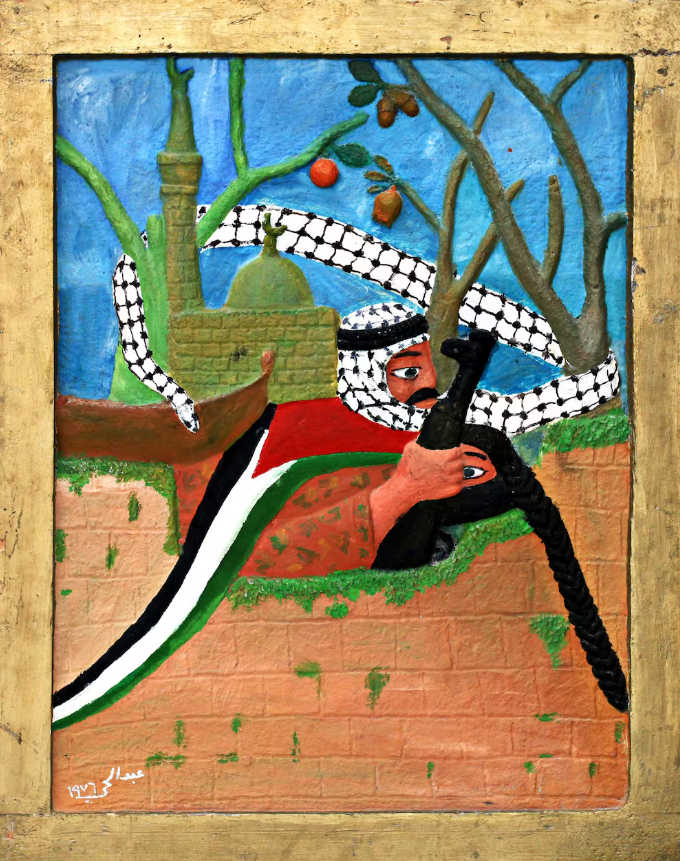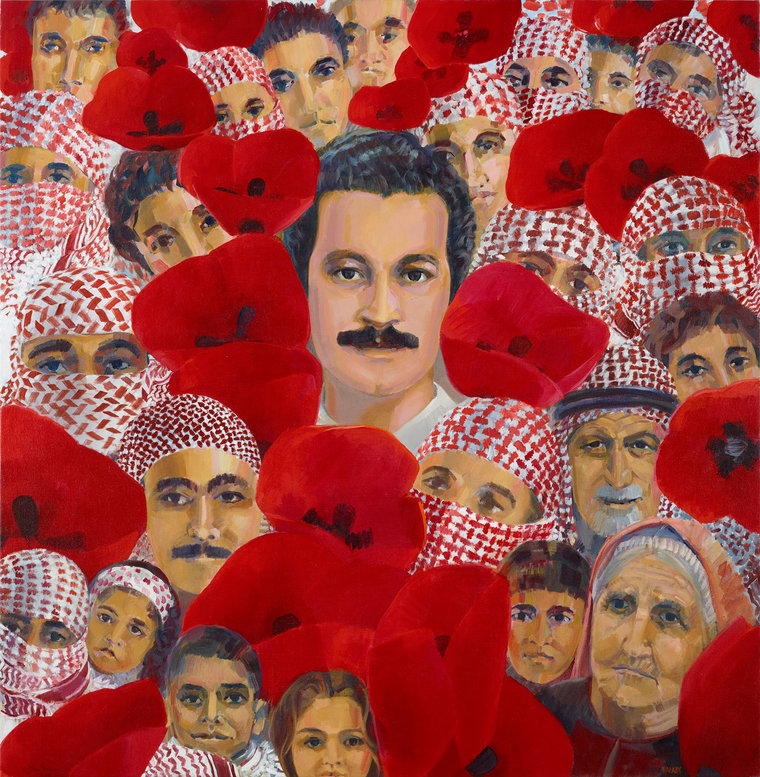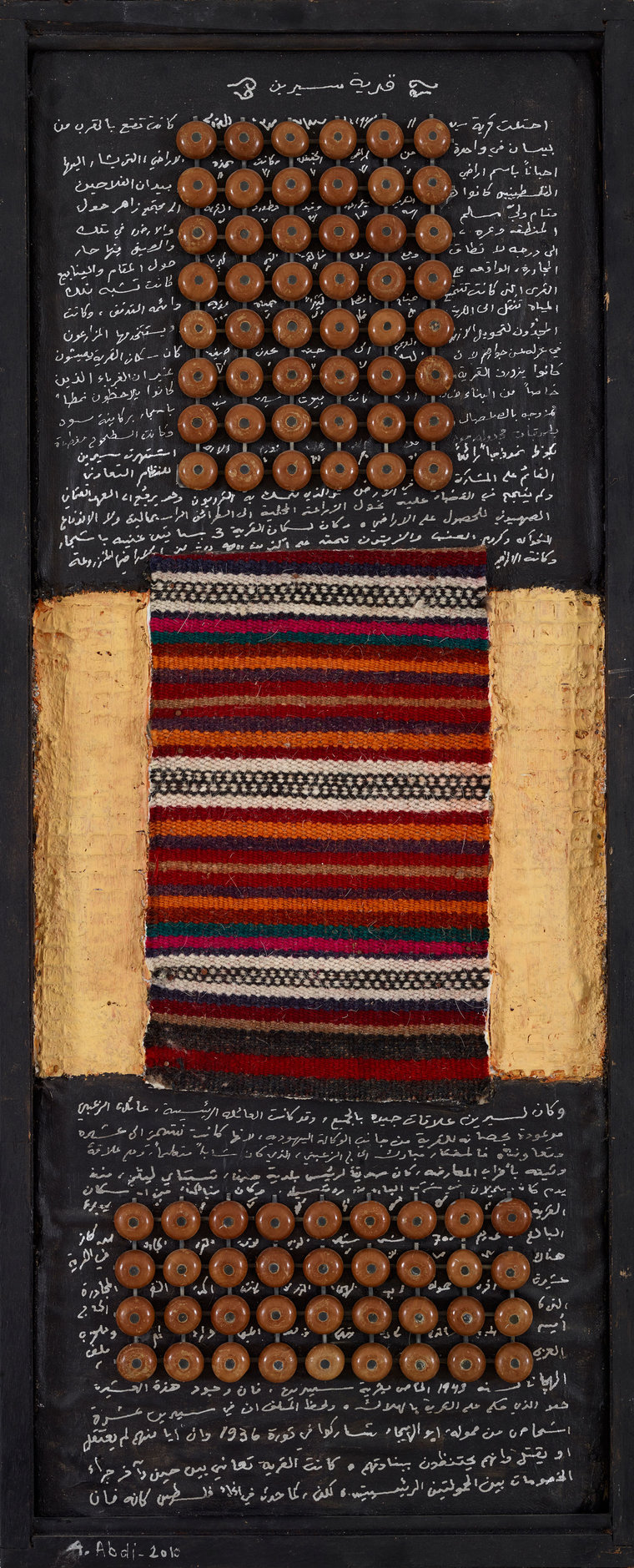Abdulhay Musallam Zarara, born in 1933 in the village of Al Duwayma, Palestine, emerged as a self-taught artist whose profound works encapsulate the historical struggles and enduring traditions of the Palestinian people. Despite starting his artistic journey at the age of 39, Zarara’s prolific output and participation in exhibitions across the Middle East and Europe cemented his legacy as a significant figure in Palestinian art.
Zarara’s upbringing in rural Palestine, marked by the loss of his father at a young age and the challenges of working the land, deeply influenced his artistic vision. The Nakba of 1948, which forced him into exile at the age of 15, further shaped his perspective as he witnessed the plight of Palestinian refugees firsthand.
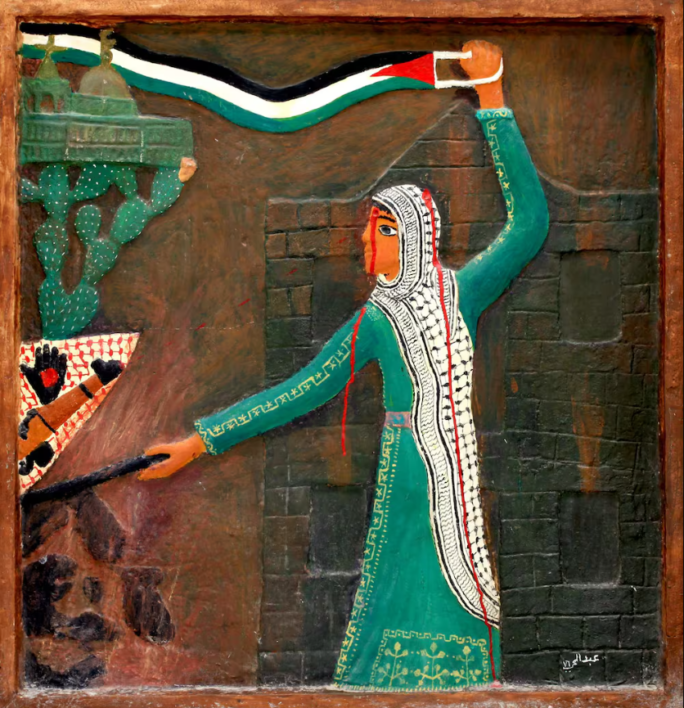
It was during his time in Libya, while serving in the Palestinian Liberation Organization (PLO), that Zarara had a transformative artistic revelation. Inspired by a magazine cover depicting the defiant face of an elderly Palestinian woman, he experimented with sawdust and glue to create sculptural reliefs, marking the inception of his distinctive artistic style.
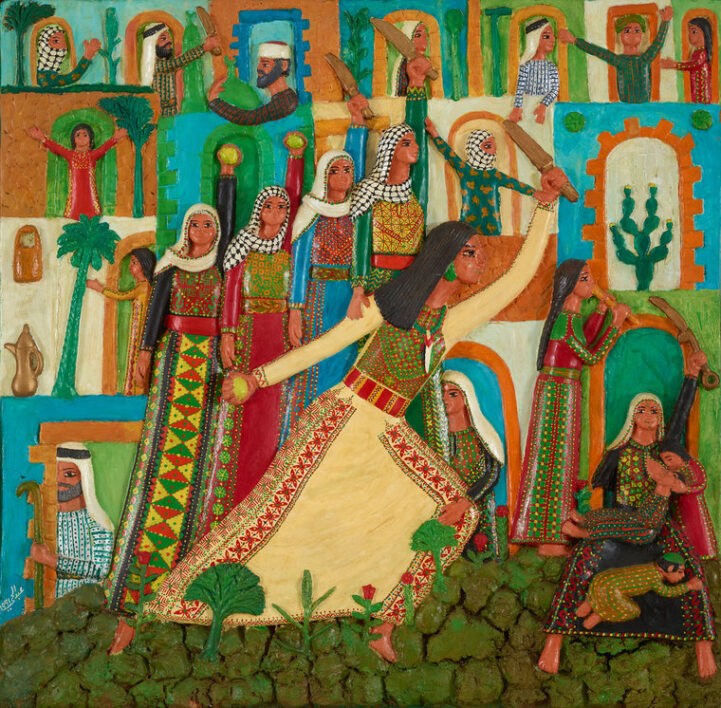


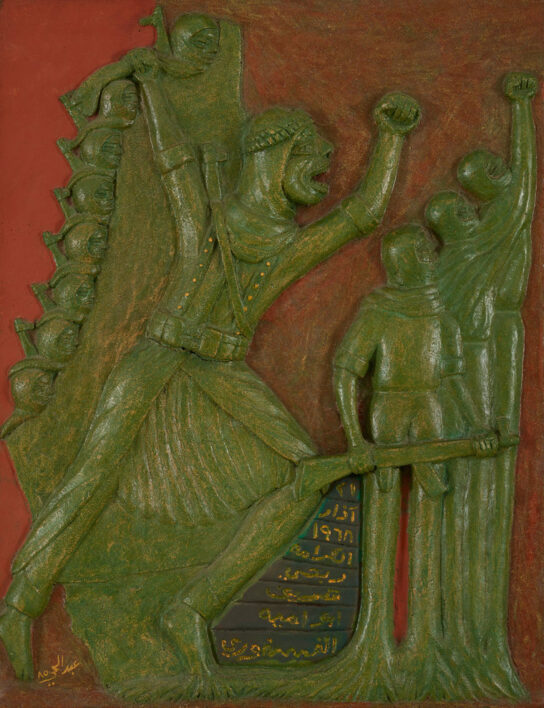
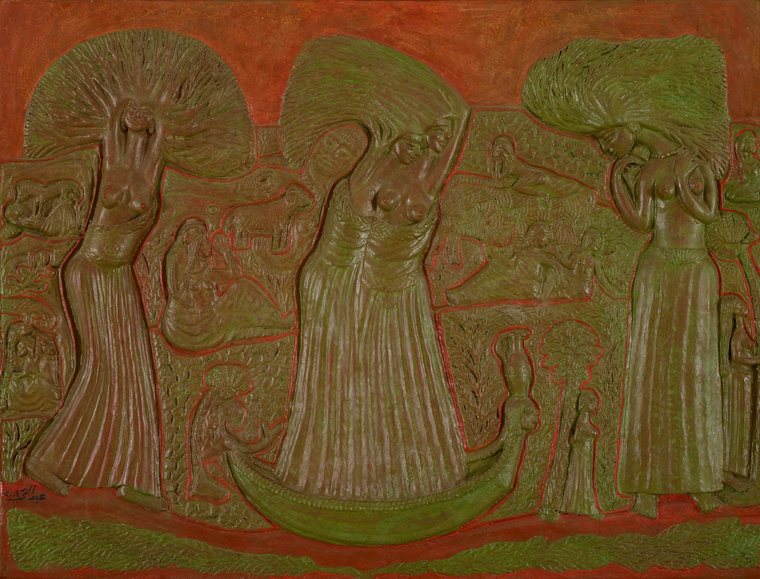
Throughout his life, Zarara remained committed to the Palestinian cause, using his art as a powerful tool of resistance against Israeli oppression. His works often depicted scenes from everyday village life, showcasing the beauty of Palestinian culture and tradition amidst adversity. Whether portraying joyful wedding celebrations or highlighting the resilience of Palestinian women, Zarara’s art served as a testament to the strength and spirit of his people.
In addition to celebrating Palestinian heritage, Zarara also confronted the realities of Israeli violence and occupation in his work. Through metaphorical imagery and symbolic representations, he depicted Israelis as monsters and Palestinians as heroes, shining a light on the injustices faced by his community.
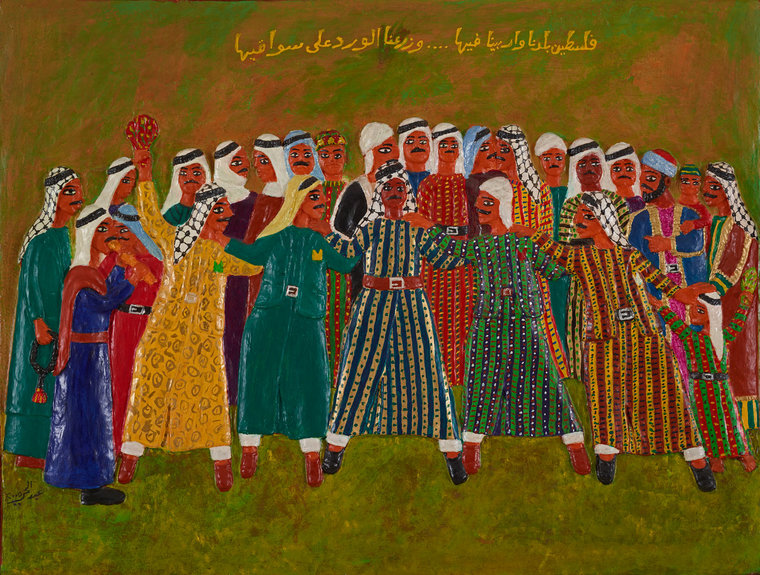

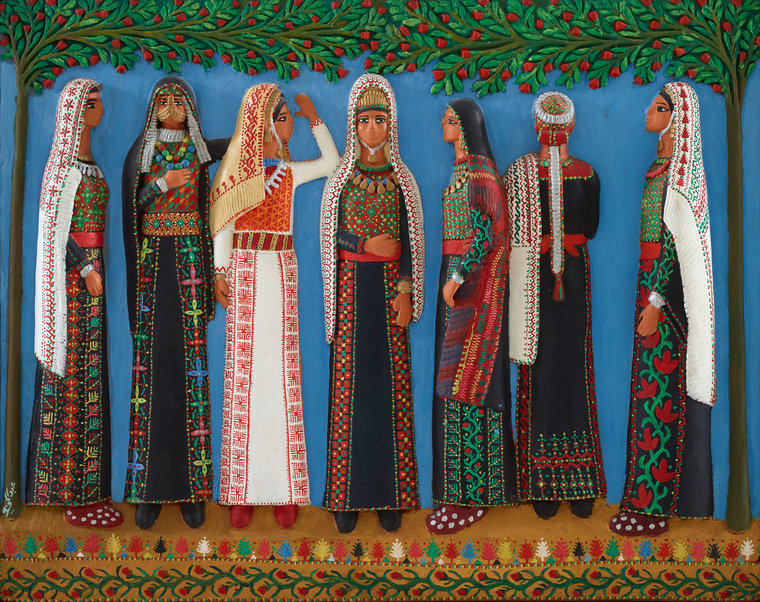
One of Zarara’s most significant contributions was the co-founding of The Naji Al Ali Fine Arts Gallery in Damascus, alongside fellow artist Mustafa El Hallaj. This initiative provided a platform for Palestinian artists to showcase their work and amplify their voices in the struggle for justice and liberation.
Despite facing numerous challenges and setbacks, Zarara remained unwavering in his dedication to his craft and his people. His legacy lives on through his extensive body of work, which continues to inspire and provoke thought on the Palestinian experience.

In recognition of his contributions to Palestinian art and culture, Zarara was awarded the Mahmoud Darwish Award in 2014. Until his passing in 2020, he remained steadfast in his dream of creating a museum to honor Palestine and its people, leaving behind a lasting legacy of resilience and resistance through art.
Sources
التشكيلي الفلسطيني عبد الحي مسلم: من الفلكلور إلى الأسطورة يسحضر بيوت فلسطين. One Fine Art. onefineart.com
إسماعيل، سامر.” عبد الحي مسلم ذاكرة القرية الفلسطينية”. Al Araby(2017). alaraby.co.uk
Makhoul, Bashir & Hon, Gordon. The Origins of Palestinian Art. London: Liverpool University Press, 2013.
“Abdul Hay Mosallam, Winner of the Mahmoud Darwish Award 2014- Darat al Funun”. Darat Al Funun(2014). daratalfunun.org
نعيم، غازي.” عبد الحي مسلم: شهادة الفنان إلى جانب الإنسان”.الدستور.(2008). addustour.com
العامري، علي. “عبدالحي مسلم… من الطيران إلى الفن التشكيلي” Emaratalyoum(2014). emaratalyoum.com
